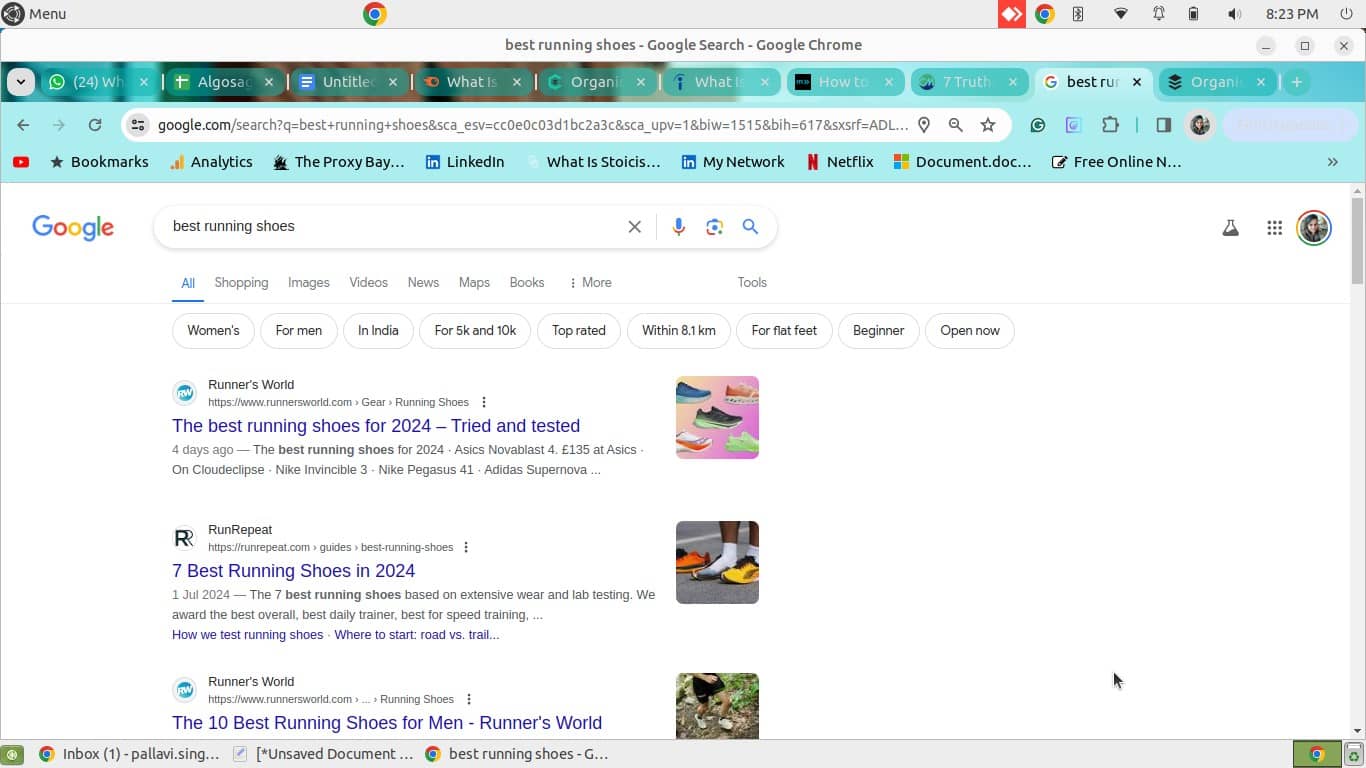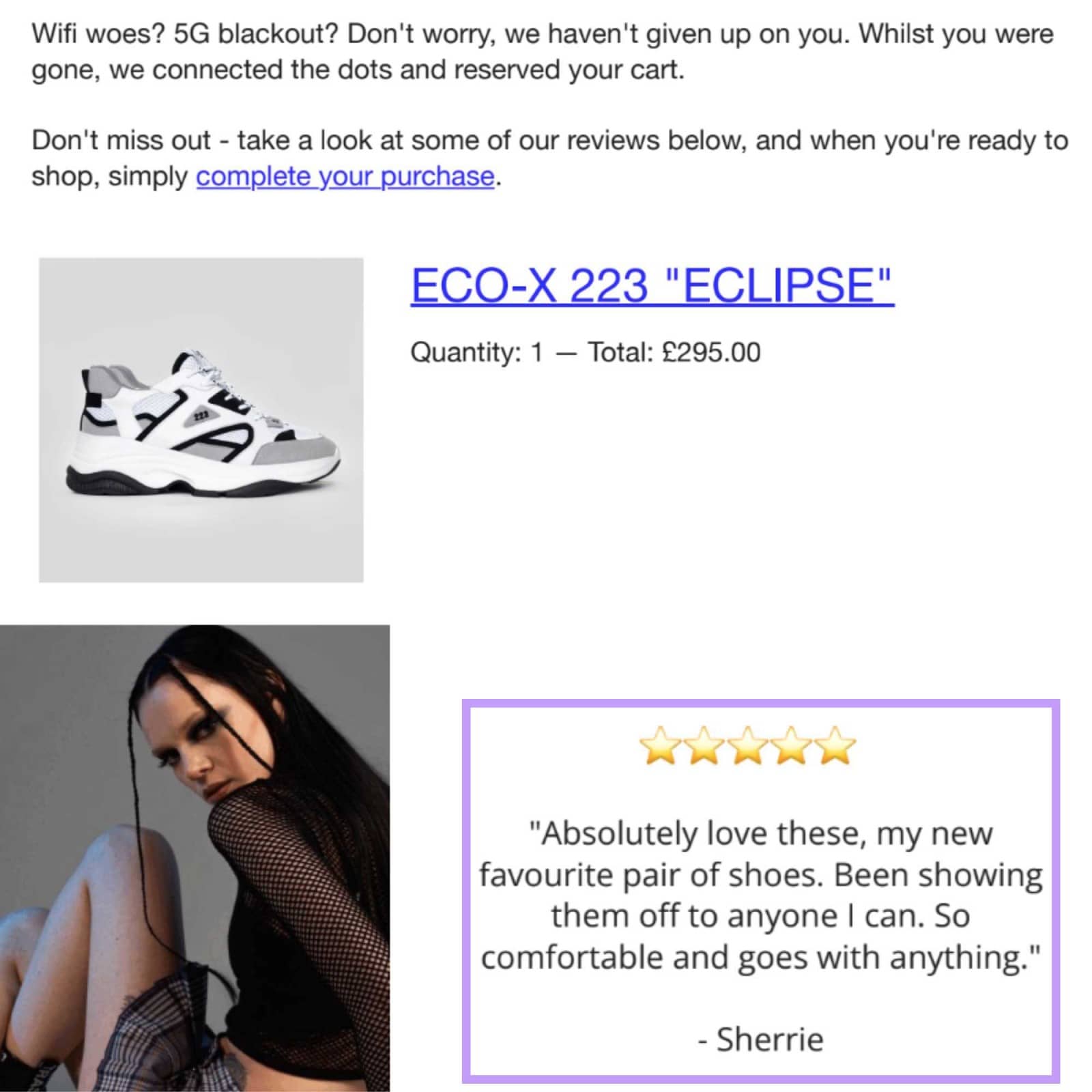Last Updated on July 28, 2024 by Admin
Marketers use different types of content to connect with customers, explain their products, and increase sales. One key type is organic content. This is content that isn’t paid for. It helps teach and entertain people who might buy something or are already customers. If you’re a marketing professional and want to get better at creating organic content, you’re in the right place.
On this page, we’ll explain what organic content is, why it’s useful, and how it’s different from paid content, and we’ll also give you tips on how to make good organic content.
What is Organic Content?
Organic content is any material that people find on their own without paid advertisements. This means it appears without having to pay for ad space.
For example:
Imagine someone searches “best running shoes” on Google. The first few results might be labeled “Sponsored,” showing that those brands paid to be there. Those are not organic results.
The results that appear below these ads are organic. These websites are ranked high because they use advanced SEO techniques, not because they paid for their spot. The first organic result in search engines usually gets a lot of traction.

Organic Content vs. Paid Content
Here’s a comparison of organic content vs. paid content to help you choose the right strategy for your marketing campaign:
Organic Content
- Purpose: Aims to educate your audience, enhance brand visibility and credibility, and foster engagement.
- Durability: Continues to reach your audience for an extended period, often spanning months or years.
- Outcome Speed: Generally requires a longer timeframe, typically months, to see substantial results.
Paid Content
- Objectives: Primarily used to boost brand awareness, acquire new leads, and facilitate immediate sales.
- Persistence: Visibility is limited to the duration of the active paid campaign.
- Result Timing: Delivers outcomes swiftly, often immediately upon campaign launch.
Brands frequently utilize paid content to accelerate their marketing efforts or secure rapid sales outcomes.
However, organic content remains a crucial element of your digital marketing strategy, offering enduring value. The following section will provide more insights into its significance.
Why is Organic Content Essential for Your Marketing Strategy?
Organic content offers a cost-effective strategy for marketers to educate consumers about their products or services. This approach provides several advantages:
- Brand Development: By delivering content that is both educational and engaging, marketers can establish and strengthen their brand identity within their industry.
- Cost Efficiency: Organic content enables the dissemination of information to customers at no direct cost, allowing marketers to allocate their budgets more effectively to other areas.
- Enhanced Search Visibility: By incorporating well-researched keywords, organic content can boost a company’s search engine rankings, expanding its reach to a broader audience.
- Relationship Building: It starts with relevant and useful content. Such content can strengthen ties with potential and existing customers. Often, these customers view organic content as more genuine. They also regard it as more trustworthy.
The Different Types of Organic Content
Explore various forms of organic content to identify the most effective strategies for engaging your specific audience. Consider the following types:
- Blog Posts: A blog post is an organic content that provides insights, instructions, or opinions on a specific topic. Blog posts typically range from 1,500 to 2,500 words.
For instance, a home improvement brand might create a blog post explaining different types of wall paint. Alternatively, they could offer a step-by-step guide on lawn care.
To generate ideas for blog posts, you can:- Look into relevant keywords.
- Check out what your competitors are blogging about.
- Understand the interests and challenges of your audience.
- User-Generated Content: User-generated content (UGC) is any promotional material that customers or contributors create voluntarily, without compensation. You can then share this content on your own platforms.
Here are some types of UGC you might encourage customers to create:
- Reviews on platforms like Google, Amazon, and TripAdvisor.
- Photos showcasing their results with your product or service on social media.
- Videos demonstrating how they use your product or service. UGC is versatile and can be easily repurposed for different marketing channels. You can incorporate it into your email campaigns, website, or social media pages.
For instance, the shoe retailer Trash Planet includes UGC in their abandoned cart emails. They might show a pair of shoes along with a customer review in these emails.

A major advantage of UGC is that it provides social proof, which can bolster your brand’s credibility and potentially encourage purchases.
- Social Media Posts: Organic social media posts can be visual, written, or audio, depending on the platform and your brand’s style.
For example, Beauty by Earth uses videos and images on Instagram to showcase their skincare products:

However, social media is saturated with content, making it a competitive space. How do you stand out?
Stay updated with trends your audience likes. Keep an eye on social media algorithm changes. A few years ago, Instagram started favoring video content. This pushed brands to post more videos to engage their audience.
By actively managing your social media, you can reach new people, inform them about your products or services, and guide them further in buying.
- Thought Leadership: It features experts sharing unique insights and opinions. This content can vary widely in format.
Options include blog posts, social media quotes, videos, and ebooks. Creativity in presentation is encouraged. Most companies engage top executives for this purpose. These include C-suite and senior managers. They possess the expertise to provide valuable insights.
However, don’t limit yourself to just the top ranks. Your company might have knowledgeable experts at all levels ready to share their ideas.
- Videos: Videos are a dynamic way to share information, combining sound, text, and visuals to explain ideas or guide viewers through processes. They’re especially useful for detailed explanations.
Here are some video ideas for your brand:
- Conduct interviews with experts on topics that interest your audience.
- Share customer testimonials or detailed case studies.
- Host live videos, such as Q&A sessions, to engage directly with viewers.
- Show tutorials on how to use your products or services.
With platforms like TikTok gaining popularity, video marketing has become increasingly vital. Studies show that articles featuring at least one video attract 70% more traffic than those without any video content.
- Infographics: Infographics are images that combine visuals and text to clearly present information, especially complex or abstract concepts.
They are also effective for expanding your audience at no cost since people often share them widely across various platforms.
To make your infographics effective, focus on making them both visually appealing and informative.
Best Tips and Strategies to Create Impactful Organic Content
Follow the below practices for a successful start to organic content creation.
- Conduct Keyword Research: Keyword research involves identifying the terms and phrases your target audience uses in search engines. This helps you discover relevant topics to focus your content on, ensuring it reaches the right people.
- Research Platforms: When creating organic content, it’s vital to identify the platforms where your target audience is most active. Understand where your customers typically consume content, such as through e-newsletters or social media. Use these insights to choose the best channels for distributing your content effectively. For instance, if your company’s e-newsletter sees high engagement, linking to website pages within these emails can drive traffic to your organic content.
- Create High-Quality Content: Concentrate on making content that answers questions, solves problems, and educates customers on particular topics. Use keywords smartly to help your content show up in search results. Make your content user-friendly and shareable by breaking down complicated ideas or using visuals to help explain them better.
- Optimize Content for Search Engines: Optimizing your content makes it discoverable by search engines. It also makes it useful to humans. Follow SEO best practices for articles. Incorporate the target keyword into the title tag. Use it in subheadings, body text, URL slug, and meta description. Include keywords related to the target keyword. Add images and videos to boost user engagement. Include relevant internal links. These encourage site exploration and assist web crawling.
- Measure Content Performance: It’s vital to measure the results of your organic content to assess its impact. Utilize tools like web or social media analytics for evaluation. For instance, track a blog post’s traffic over a month. Identify improvement areas, like updating keywords, to increase reach. Regular measurement helps refine content and achieve marketing goals.
Wrapping Up!
Creating effective organic content is key to thriving in the digital era. It’s genuine, easily shared, and cost-effective, offering lasting benefits for your brand.
To fully leverage an organic content writing services & strategies for your business, contact AlgoSaga digital marketing agency today. We’re eager to assist you in maximizing the impact of your content. Let us help you turn your vision into reality with strategies that resonate and engage.
